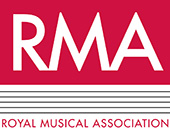The international conference ‘Intersections: Between Music and Theatre in Seicento Italy’ was held on the 20th and 21st of September 2018 at the University of Cambridge. Interdisciplinary in nature, the conference aimed to bridge the gap between music and theatre, engaging established scholars, early-career researchers, and students from different disciplines, professional actors and musicians, and members of the public. The resulting exchange of ideas opened up new avenues of research in the underexplored field of Seicento studies and brought to light a web of previously overlooked connections.
All speakers underlined the fact that the Italian seventeenth century was an extremely fruitful period, whose influence was felt in European culture for centuries to come. The dynamism pervading the Seicento emerged forcefully in the difficulty of classifying genres – as Richard Andrews (University of Leeds) highlighted in his keynote lecture on opera and non-musical drama – and mapping movements of artists throughout the peninsula. It also became clear that an investigation of intersections between the different fields of music and theatre implies a degree of uncertainty due both to the problems of locating primary sources and the volatile nature of performance itself, which our keynote speaker Lisa Sampson (University College London) aptly called ‘the intangible heritage of spectacle’. In spite of these challenges, the Seicento is a field worth further study, as it generated multiple innovative and hybrid forms and allowed unexpected collaborations between artists: in the creative space between music and theatre, opera was born, secular and religious theatre influenced one another, and Commedia dell’Arte circles productively overlapped with musical and theatrical spheres.
To some extent, Italian Academies were a common ground for the several different subjects addressed during the conference. These intellectual circles often played a key role in educating artists, promoting their careers, and encouraging encounters between musicians and actors. Their members also frequently enjoyed performances of the female voice when hosting talented virtuose – ‘Seicento secular icons’, as Eric Nicholson (NYU, Florence) named them in his paper. The inclusion or exclusion from academic circles was subject of discussion, since academic membership was influential for several of the historical figures analysed during ‘Intersections’.
Entrepreneurship was another recurrent theme of the conference papers. Prime examples cited were the actor and playwright Giovan Battista Andreini and the writer and composer Benedetto Ferrari, as Annamaria Azzarone (Scuola Normale Superiore, Pisa) and Daniele Falcioni (University of Edinburgh) pointed out in their contributions. Boundless energy and entrepreneurial spirit granted Andreini and Ferrari extraordinary success, fuelling their strategic publications and restless movement throughout the peninsula and abroad.
‘Intersections’ also illustrated how music-making is indispensable for an academic musical discourse. Keynote speaker Antonio Rostagno (Università degli Studi di Roma, La Sapienza) illustrated the different rhythmical complexities in Claudio Monteverdi’s L’incoronazione di Poppea, with the help on one of the conference organisers, the soprano Anna-Luise Wagner. Marylin Winkle (University of Southern California) brought out her cello to demonstrate compositional techniques in Francesca Caccini’s La liberazione di Ruggiero and Fabrizio Longo (MIUR) moved the audience with touching violin ritornelli from the anonymous melodrama he examined in his paper.
The academic versatility of the conference was complemented by two free, public events, which actively encouraged the participation of non-specialists and students from different disciplines. Both events were fully booked and received enthusiastic feedback. The concert and parts of the workshop were recorded and are now available on request for study purposes.
On the first conference day, Ludovico Nolfi, an experienced director and theatre trainer from Rome (arsinfieri), demonstrated the use of body and voice in Commedia dell’Arte and its influence on present-day theatre in a two-hour acting workshop. Participants learned movements for stock characters, explored solo lazzi, and developed short improvisations for different character constellations. Keynote speaker Prof. Andrews shared his expertise with the participants and the audience in an introductory talk preceding the workshop. A one-hour concert, which included a fully staged performance of Monteverdi’s Il combattimento di Tancredi e Clorinda, concluded the second conference day. Keynote speaker Prof. Rostagno gave an introductory talk before the performance. The production was conceived by tick tock performance, who were joined by a stellar line-up of musicians from London and Cambridge.
Anna-Luise Wagner and Serena Laiena
